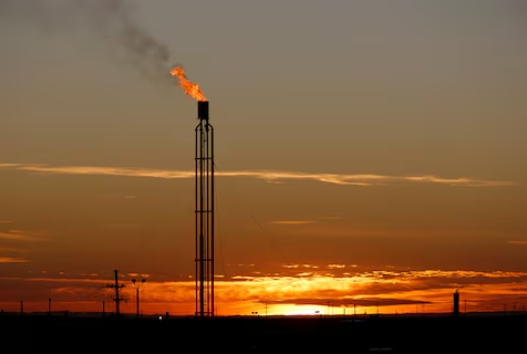
A flare burns excess natural gas in the Permian Basin in Loving County, Texas, U.S. November 23, 2019.
Looking ahead, the EIA forecasts a decline in production to 112.9 bcfd by 2040, followed by a slight increase to 115.2 bcfd by 2050. Demand is expected to decrease to 80.7 bcfd in 2040 before rising marginally to 82.6 bcfd in 2050. The projections reflect shifts in energy consumption patterns and production capabilities over the coming decades.
The report also highlights growth in U.S. liquefied natural gas (LNG) exports, which are expected to increase from a record 11.9 bcfd in 2024 to 15.2 bcfd in 2025, 21.5 bcfd in 2030, and 26.8 bcfd in 2040, before stabilizing at 26.7 bcfd in 2050. This rise underscores the growing role of the U.S. in global energy markets, driven by demand for natural gas exports.
Natural gas sales to various sectors are projected to follow distinct trends. Residential consumption is expected to peak at 13.3 bcfd in 2028, compared to a historical high of 14.3 bcfd in 1996. Commercial sector sales are forecasted to reach 9.9 bcfd by 2050, surpassing the previous peak of 9.6 bcfd in 2019. Industrial demand is anticipated to hit 27.2 bcfd in 2050, exceeding the 23.8 bcfd record from 1973. However, power generation consumption is projected to decline to 23.0 bcfd by 2050, down from a high of 36.9 bcfd in 2024.
The EIA’s outlook provides a comprehensive view of the U.S. natural gas sector, balancing production, domestic consumption, and export growth. The projections account for evolving energy needs and technological advancements, offering insights into the future of natural gas in the U.S. energy landscape.